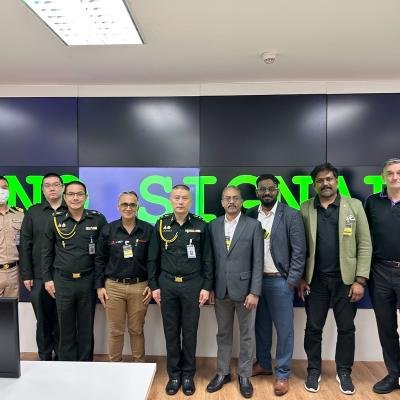In today's fast-paced digital landscape, the development and deployment of software applications have undergone a transformation. Enterprises and startups alike are increasingly adopting microservices architecture to gain agility, scalability, and efficiency. While this approach offers numerous benefits, including improved development speed and flexibility, it also presents unique security challenges that need to be addressed proactively.
Understanding Microservices Architecture
Before diving into the intricacies of microservices security, let's establish a clear understanding of what microservices are and why they are gaining popularity.
Microservices architecture is a software design pattern that breaks down complex applications into smaller, independently deployable units called microservices. Each microservice is responsible for a specific functionality, operates autonomously, and communicates with other microservices through APIs. This decomposition allows development teams to work on different parts of the application concurrently, facilitating rapid development and deployment.
Key Security Challenges in Microservices
As organizations embrace microservices architecture, they must be aware of and prepared to tackle the unique security challenges it presents. Here are some of the primary security concerns associated with microservices:
Service-to-Service Communication Security:
Microservices communicate extensively with one another over networks. Securing these communication channels is critical to prevent eavesdropping, man-in-the-middle attacks, and unauthorized access.
Dynamic Scaling and Elasticity:
Microservices can scale independently based on demand. This dynamic scaling makes it challenging to maintain consistent security policies across various instances of a service.
Service Discovery:
Effective service discovery is vital for microservices to locate and communicate with one another. However, improperly secured service discovery mechanisms can expose sensitive information to potential attackers.
Data Management and Privacy:
Microservices often handle sensitive data, such as user information or payment details. Ensuring data privacy and protection is a top priority, requiring strong encryption and access controls.
Dependency Management:
Microservices frequently depend on third-party services and libraries. Managing these dependencies and ensuring their security can be complex, as vulnerabilities in dependencies can impact the overall system.
Microservices Security Best Practices
To mitigate these challenges and secure microservices effectively, organizations should adopt a comprehensive security strategy. Here are key best practices for microservices security:
API Gateway and Authentication
Implementing an API gateway helps centralize authentication and authorization. All incoming requests should be authenticated and authorized based on predefined policies. This not only secures external access but also internal communication between microservices.
Encryption
Encrypt communication between microservices using industry-standard protocols like TLS/SSL. This encryption ensures that data in transit remains confidential and protected from interception or tampering.
Access Control and Authorization
Leverage access control lists (ACLs) and role-based access control (RBAC) to manage permissions effectively. Enforce the principle of least privilege, granting only the necessary access to each microservice based on user roles and responsibilities.
Service Mesh
Consider implementing a service mesh to manage communication between microservices. Service meshes provide advanced features like mutual TLS, load balancing, and traffic control, enhancing security while maintaining visibility into network traffic.
Secrets Management
Use a dedicated secrets management solution to store and manage sensitive information, such as API keys, passwords, and encryption keys. Secrets should never be hard-coded into microservices code, as this poses a significant security risk.
Logging and Monitoring
Implement comprehensive logging and monitoring solutions to detect and respond to security incidents promptly. Tools like Prometheus, Grafana, and Elasticsearch can help track performance, analyze logs, and identify anomalies that may indicate security breaches.
Vulnerability Scanning and Patch Management
Regularly scan microservices for vulnerabilities using automated tools. Establish a robust patch management process to apply security updates promptly. Vulnerabilities in third-party libraries and components should also be monitored and addressed.
Threat Modeling
Conduct threat modeling exercises to identify potential security risks specific to your microservices architecture. By understanding potential threats, you can design security controls from the outset and prioritize security efforts effectively.
Container Security
If your microservices are containerized using technologies like Docker or Kubernetes, pay special attention to container security. Follow best practices such as using minimal base images, implementing security profiles, and regularly scanning container images for vulnerabilities.
DevSecOps Integration
Integrate security into your DevOps pipeline, adopting a DevSecOps approach. Automate security checks, vulnerability assessments, and security testing throughout the development and deployment lifecycle. Security should not be an afterthought but an integral part of the development process.
Examples and Evidence:
- Data Breaches and Secure Communication:
Example: In 2020, Capital One experienced a major data breach that exposed the personal information of over 100 million customers. The breach occurred due to a misconfigured firewall in a microservices environment, allowing an attacker to access sensitive data.
Evidence: This incident highlights the critical need for secure communication between microservices. A misconfiguration in one microservice can have far-reaching consequences, emphasizing the importance of implementing encryption and access controls to prevent such breaches.
- API Security and Authorization:
Example: A popular e-commerce platform integrates various microservices for handling user profiles, payments, and inventory. Without proper API security and authorization mechanisms, a malicious actor could exploit vulnerabilities in one microservice to gain unauthorized access to user data or payment processing.
Evidence: By implementing robust access control and authentication mechanisms, such as OAuth or JWT, organizations can ensure that only authorized microservices can access sensitive data and functionalities. This prevents unauthorized access and potential breaches.
- Service Discovery and Information Exposure:
Example: In a microservices-based retail application, service discovery is used to locate and communicate with various microservices. If this service discovery mechanism is not properly secured, an attacker might intercept the communication or gain insights into the structure of the application, potentially facilitating further attacks.
Evidence: Implementing secure service discovery, such as using mutual TLS authentication, can prevent unauthorized access to service information. This reduces the risk of attackers exploiting weak points in the system's architecture.
- Secrets Management and Insider Threats:
Example: A disgruntled employee with access to microservices codebases could insert malicious code or steal sensitive information, such as database credentials, API keys, or encryption keys, leading to data breaches or system disruptions.
Evidence: Effective secrets management, such as using dedicated vaults like HashiCorp Vault or AWS Secrets Manager, ensures that sensitive information is stored securely and can only be accessed by authorized personnel or services. This mitigates the risk of insider threats and unauthorized access to secrets.
- Vulnerability Scanning and Patch Management:
Example: The Equifax data breach in 2017 was caused by an unpatched vulnerability in a web application framework. In a microservices environment, keeping track of vulnerabilities in various microservices and applying patches can be challenging.
Evidence: Regular vulnerability scanning and patch management processes can help organizations identify and remediate vulnerabilities promptly. Automated tools, like Nessus or OpenVAS, can be employed to scan microservices for known vulnerabilities, reducing the risk of security incidents.
- Logging and Monitoring for Anomaly Detection:
Example: A healthcare application's microservices handle sensitive patient data. Without robust logging and monitoring, unusual access patterns or data exfiltration might go unnoticed, leading to patient privacy breaches.
Evidence: Implementing comprehensive logging and monitoring solutions enables organizations to detect anomalies and potential security breaches in real-time. Tools like Splunk or ELK Stack help security teams proactively respond to suspicious activities, safeguarding sensitive data.
Conclusion
In an age where innovation and efficiency are paramount, microservices architecture has emerged as the cornerstone of modern application development. At digiALERT, we understand the immense potential this architectural paradigm offers. However, we also recognize that with great flexibility comes great responsibility—responsibility to safeguard the digital assets, sensitive data, and user trust that power our digital world.
As we've explored in this comprehensive overview of microservices security, the journey toward building and maintaining secure microservices is not one to be taken lightly. It demands a proactive and holistic approach, embracing best practices that cover everything from communication security to vulnerability management.
The takeaway is clear: microservices security is an ongoing commitment. Just as modern applications continuously evolve and scale, so too must their security posture. By integrating security into the very fabric of our microservices, adopting a DevSecOps mindset, and staying vigilant in the face of emerging threats, we can fully harness the potential of microservices while ensuring the resilience and trustworthiness of our digital systems.
At digiALERT, we're dedicated to helping you navigate the complex landscape of microservices security. By embracing these best practices, staying informed about evolving threats, and fostering a security-first culture, we can collectively build the next generation of modern applications that are not only agile and scalable but also impenetrable in the face of cyber threats.
As we continue to innovate and secure the digital future, remember that every line of code and every microservice we protect is a building block in the edifice of a safer and more connected world. Together, we shape the future, one secure microservice at a time.







